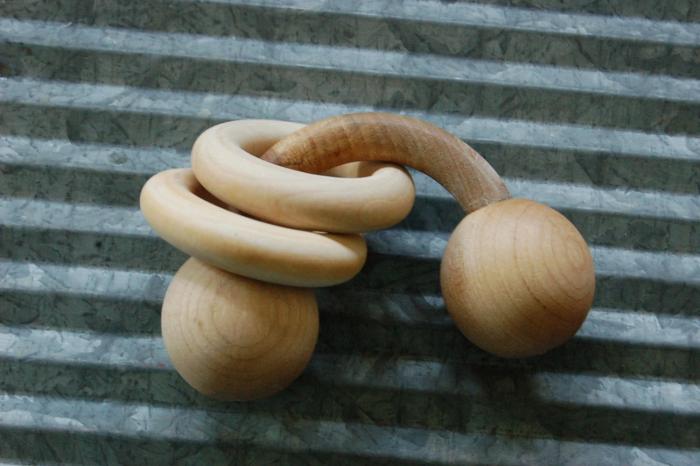Teething is a natural part of a baby’s development. As babies grow, they begin to experience discomfort as their teeth break through the gums. To soothe this discomfort, many parents turn to teething toys. Among these, wood teethers are becoming increasingly popular. But are wood teethers safe for babies? This article will explore the safety of wood teethers and their benefits.
Understanding Teething
Teething usually begins around six months of age. However, it can start earlier or later for some babies. During this time, babies may experience pain and discomfort. They might drool more, be fussy, or want to chew on everything in sight.
Parents often seek ways to relieve this discomfort. Teething toys can provide a safe and soothing option. Wood teethers are one type that many parents consider.
Benefits of Wood Teethers
Wood teethers have gained popularity for several reasons. Here are some benefits of using wood teethers:
Natural Material
Wood is a natural material. Unlike plastic, it does not contain harmful chemicals. Many parents prefer natural products for their babies. Wood teethers can be free from BPA, phthalates, and other toxic substances.
Durability
Wood teethers are generally very durable. They can withstand a lot of chewing and gnawing. This makes them a long-lasting option compared to some softer teething toys that may wear out quickly.
Aesthetic Appeal
Wood teethers often have a natural look. Many parents appreciate their aesthetic appeal. They can fit well with a natural or minimalist home decor.
Versatility
Wood teethers come in various shapes and sizes. Some are designed to resemble animals or geometric shapes. This variety can make teething more fun for babies.
Safety Considerations
While wood teethers have many benefits, it’s essential to consider their safety. Here are some key points to keep in mind:
Material Quality
Not all wood teethers are created equal. It’s crucial to choose teethers made from high-quality, safe wood. Look for teethers made from untreated hardwood, such as maple or beech. These woods are less likely to splinter.
Finish and Coating
Some wood teethers may be treated with finishes or oils. Parents should ensure these treatments are food-safe and non-toxic. Always check the manufacturer’s information. Avoid teethers with toxic finishes or coatings.
Size and Shape
The size and shape of a teether are important. Make sure the teether is not too small to prevent choking. It should be easy for babies to grip and hold. Avoid teethers with small parts that could pose a choking hazard.
Regular Inspection
Parents should regularly inspect wood teethers for signs of damage. Look for cracks, splinters, or rough edges. If any damage is found, it’s best to discard the teether.
How to Clean Wood Teethers
Cleaning wood teethers is essential for maintaining hygiene. Here’s how to do it safely:
Wipe Down: Use a damp cloth to wipe the teether. This removes saliva and surface dirt.
Avoid Soaking: Do not soak wood teethers in water. Wood can absorb moisture, leading to warping or cracking.
Use Mild Soap: If necessary, use a small amount of mild, natural soap. Rinse well with a damp cloth afterward.
Air Dry: Allow the teether to air dry completely. Avoid using a dryer or heat source, as this can damage the wood.
Alternatives to Wood Teethers
While wood teethers have their advantages, there are other options available. Here are a few alternatives:
Silicone Teethers
Silicone teethers are soft and flexible. They are easy for babies to grip and chew. Many silicone teethers are dishwasher-safe, making cleaning easy. They are also available in various fun shapes and colors.
Rubber Teethers
Rubber teethers are another popular option. They are durable and can provide good relief during teething. Look for natural rubber, as it is free from harmful chemicals.
Cloth Teethers
Cloth teethers often come with a soft fabric attached to a teething ring. They can be soaked in water and frozen for extra cooling relief. Make sure to choose machine-washable options for easy cleaning.
Tips for Choosing the Right Teether
When selecting a teether for your baby, consider the following tips:
Check for Safety Certifications: Look for products that meet safety standards. Certifications ensure the product is safe for babies.
Research Brands: Choose brands that prioritize safety and quality. Read reviews from other parents to gauge their experiences.
Consider Your Baby’s Preferences: Babies may have their own preferences for texture and shape. Offer a few different types to see which one your baby likes best.
Consult Your Pediatrician: If you have concerns about teething products, consult your pediatrician. They can provide recommendations based on your baby’s needs.
See also: Are Water Teethers Safe
Conclusion
Wood teethers can be a safe and effective option for soothing teething discomfort. Their natural materials and durability make them appealing to many parents. However, safety should always be the top priority.
Choosing high-quality wood teethers, checking for safe finishes, and regularly inspecting them are essential steps.
By following these guidelines, parents can confidently provide their babies with safe and enjoyable teething experiences. Whether you choose wood, silicone, or another type of teether, the goal is to support your baby’s comfort and development during this natural phase.
Related topics:


